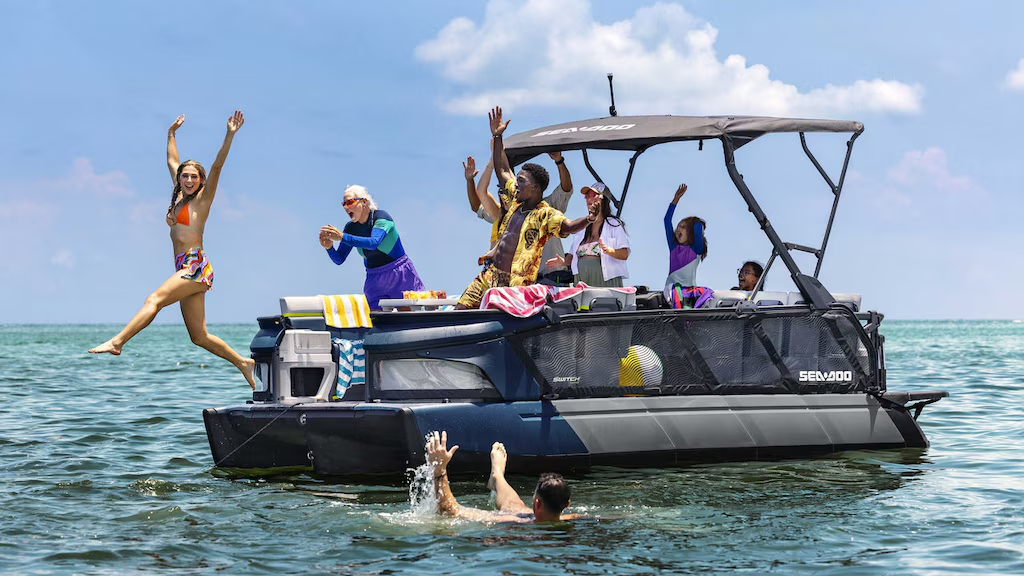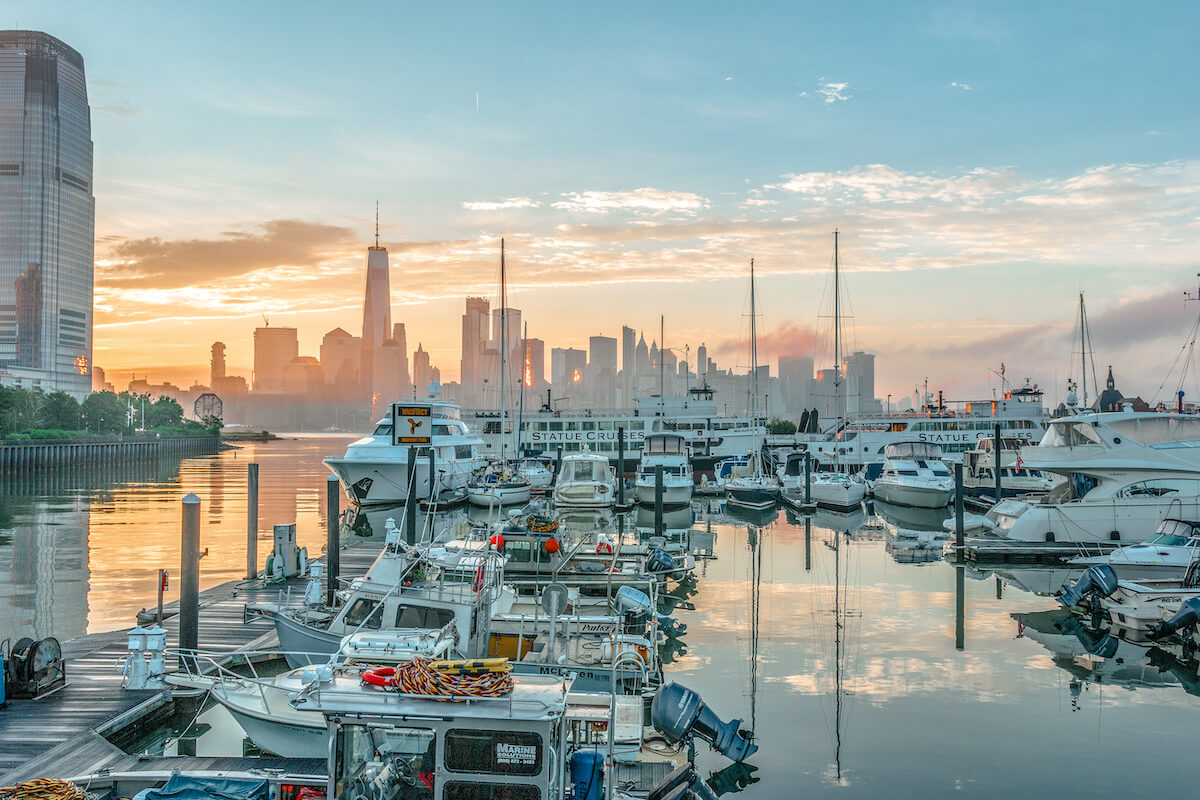Boat Wraps 2024: Just a Trend or Here to Stay?
Boat wraps have gained significant popularity in recent years. In 2024, there has been a surge in demand for these stylish and functional customization solutions.

Often viewed as a cost-effective alternative to traditional paint jobs, boat wraps allow owners to personalize their vessels with unique designs and graphics. They also offer additional benefits such as easy maintenance and protection from harsh marine environments.
Yet, as with any growing industry, questions emerge: are boat wraps merely a passing trend or are they here to stay?
The rise of boat wraps in 2024 can be attributed to a combination of factors, including advancements in technology, changing consumer preferences, and increasing awareness of their practical benefits.
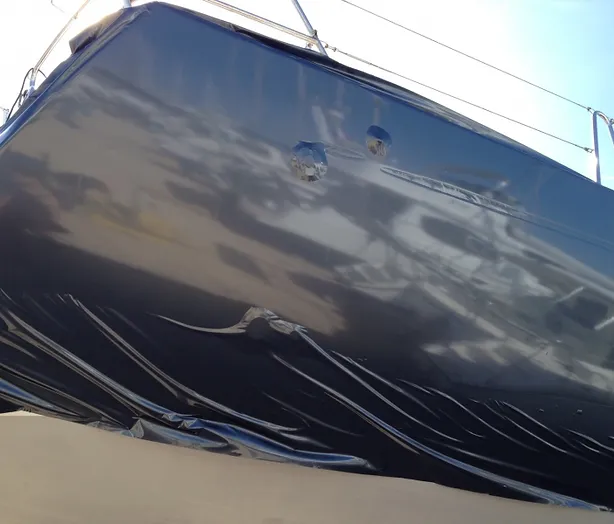
As boats continue to evolve, surpassing the limits of traditional designs and materials, boat wraps allow owners to showcase their individual style and creativity, keeping up with the ever-changing market dynamics.
Key Takeaways
- Boat wraps have gained popularity in 2024, driven by technological advancements and a shift in consumer preferences
- These wraps offer various benefits such as personalization, protection, and cost-effectiveness compared to traditional paint jobs
- As the industry evolves, boat wraps continue to adapt and find a place in the market, making them a potential lasting trend rather than a passing fad
What Are Boat Wraps?
Boat wraps are protective and customizable coverings applied to the exterior of boats, providing both aesthetic appeal and practical benefits. They are often made from vinyl and designed to withstand harsh marine environments.
Materials and Technologies
Vinyl wrap is the primary material used for boat wraps. It is highly durable, eco-friendly, and resistant to fading caused by UV rays.
Thanks to advancements in technology, these wraps come in various designs and finishes. This allows boat owners to personalize the appearance of their vessels while protecting the underlying paint and gelcoat.
Vinyl is also known for its easy maintenance, making it suitable for both professional and recreational boat users.
- Durability: Vinyl wraps are specifically designed to withstand harsh marine conditions, providing protection against salt, water, and sun exposure for several years.
- UV Rays Resistance: High-quality boat wraps offer UV resistance, which helps retain the color and finish of the design, reducing fading caused by prolonged sun exposure.
- Eco-friendly: Vinyl boat wraps are considered an environmentally friendly option compared to traditional boat painting, as they don't contain any harmful chemicals.
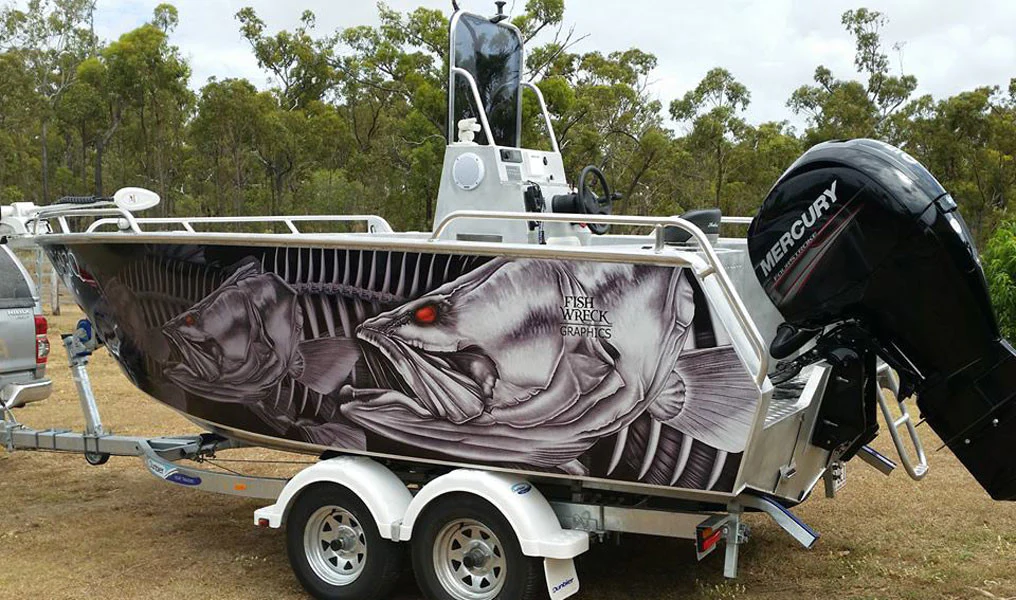
Types of Boat Wraps
There are two main types of boat wraps: full wraps and partial wraps. Each type offers unique benefits and can be tailored based on the desired level of coverage and design preferences.
- Full Wraps: As the name suggests, full wraps provide a complete covering of the boat's exterior, maximizing the level of protection and allowing for a total transformation in the vessel's aesthetics. Full wraps are typically more expensive than partial wraps due to the increased amount of material used and the complexity of the design. They can be found in 2024 Elite boat wraps, helping professional anglers showcase their brand and sponsors with creative designs.
- Partial Wraps: A more budget-friendly option, partial wraps cover only certain areas of the boat, still offering a reasonable level of protection and personalization, without the higher costs associated with full wraps. The boat wrap cost varies, depending on factors like the size and quality of the vinyl used.
The Rise of Boat Wraps in 2024
Post-Pandemic Impact
The boat wrap industry has experienced significant growth in 2024, primarily fueled by the post-pandemic boom in the boating sector.
As the world began to open up and recover from the pandemic, interest rates remained low, allowing more people to invest in boat purchases. This trend created a surge in demand for boat wraps, both for their protective qualities and the opportunity for personalization.
In addition, the increased use of boats as a means of leisure and recreation during the pandemic led to a depletion of 2023 inventory. This resulted in a higher demand for new boats to be manufactured.
Many boat builders and dealers took advantage of this opportunity to incorporate boat wraps as a standard feature to protect and enhance the appearance of their products.

Boating Industry Trends
In 2024, several trends have pushed the boat wrap industry forward:
- Brand Visibility: Boat wraps allow for impressive customization, enabling businesses and individuals to showcase their brand in a unique way, displaying their logo and design across a large surface area on a boat.
- Cost-Effectiveness: Boat wrap costs are more accessible to a wider range of boat owners, as opposed to investing in custom paint jobs which can be significantly more expensive.
- Durability: Boat wraps are made from marine-grade vinyl designed to withstand harsh marine environments, with a well-applied boat wrap lasting anywhere from 4 to 10 years.
Customization and Personalization
Brand and Advertising Potential
Boat wraps provide an excellent opportunity for businesses to utilize their vessels for brand promotion. Customized boat wraps can serve as moving billboards, catching the attention of people on and off the water.
By incorporating company logos, slogans, and other marketing elements, businesses can increase their visibility, thus expanding their reach to potential customers.
For a hassle-free, cost-effective method of customization, boat wraps are preferred over traditional custom paint jobs.
Created from premium marine-grade vinyl, wraps are known for their resilience against environmental conditions. Moreover, boat wraps enable a high level of design flexibility and creativity, allowing businesses to work with professional artists or graphic designers to develop eye-catching themes and graphics.
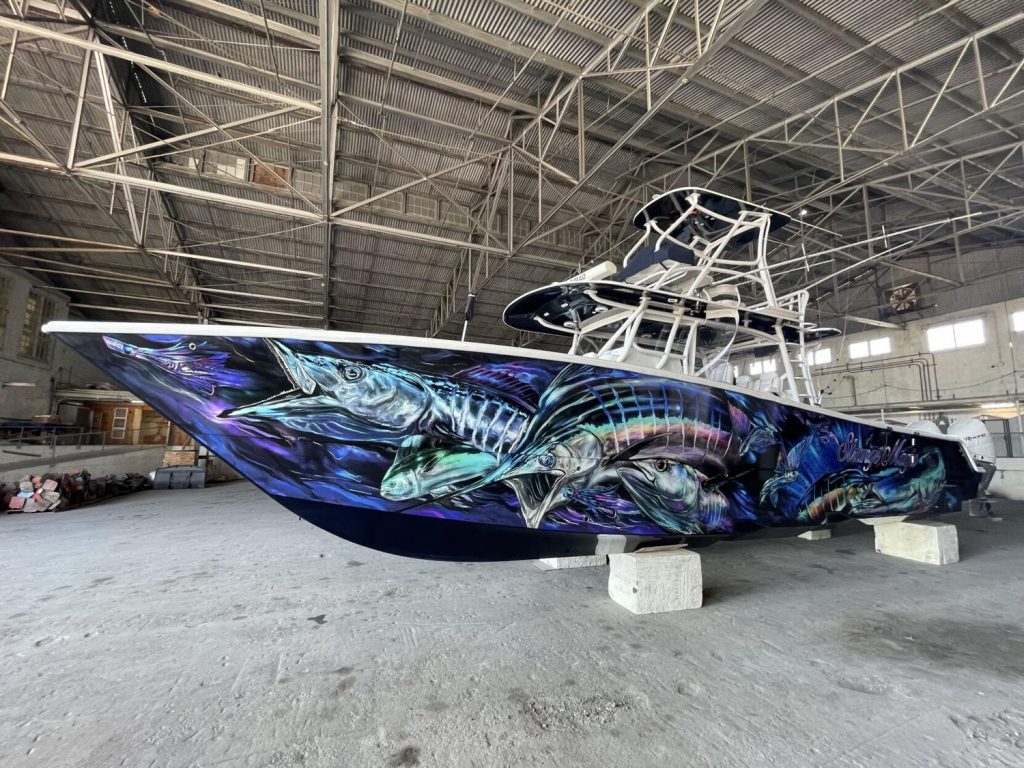
Expressing Personality
Those who seek to express their personality through their vessels can also greatly benefit from the boat customization trend of using wraps.
Highly personalized designs enable boat owners to showcase their unique taste and style. Boat wraps offer an extensive array of colors, patterns, and textures to choose from, empowering individuals to curate a one-of-a-kind rendition of their watercraft.
Aside from the visual appeal, boat wraps offer practical advantages such as protecting the vessel's hull from harmful UV rays, scratches, and other potential cosmetic damages.
This dual-benefit makes boat wraps a compelling investment for boat owners who value aesthetics and protection.
Practical Benefits of Boat Wraps
Protection and Longevity
Boat wraps made from marine-grade vinyl offer durability and protection for your watercraft. These wraps help shield the boat's surface from harsh weather, UV rays, and other elements, ultimately prolonging the boat's lifespan.
In addition, a well-applied boat wrap lasts anywhere from 4 to 10 years, depending on factors like water conditions and maintenance.
Wrapping your boat not only enhances its appearance but also serves to protect your investment. By safeguarding the boat's surface from potential damage, boat wraps can contribute to maintaining a higher resale value.
Maintenance and Care
Boat wraps offer a significant advantage in terms of maintenance and care.
Unlike custom paint jobs, boat wraps are much easier to repair, and the fix is often quick. If a part of the vinyl wrap gets damaged, it can be replaced without having to re-wrap the entire vessel.
Plus, the color is fade-resistant, ensuring a seamless match with the rest of the boat.
Installation and Costs
Professional Installation vs DIY
When it comes to installing boat wraps, there are two main options: professional installation or DIY installation.
Professional installation ensures a high-quality finish, while DIY installation offers a more cost-effective solution for those who feel confident in their abilities.
A professional installation can provide a seamless and long-lasting result.
Professionals are well-equipped to handle the intricacies of vinyl application and are familiar with various boat wrap brands.
Opting for a professional's assistance can be a worthwhile investment if you want to protect and personalize your boat.
On the other hand, DIY boat wraps can be a more affordable solution for owners who have confidence in their skills.
The cost of materials for a DIY wrap falls around $7-$10 per square foot.
However, it's important to note that a DIY wrap may not provide the same longevity or flawless application as a professional installation.
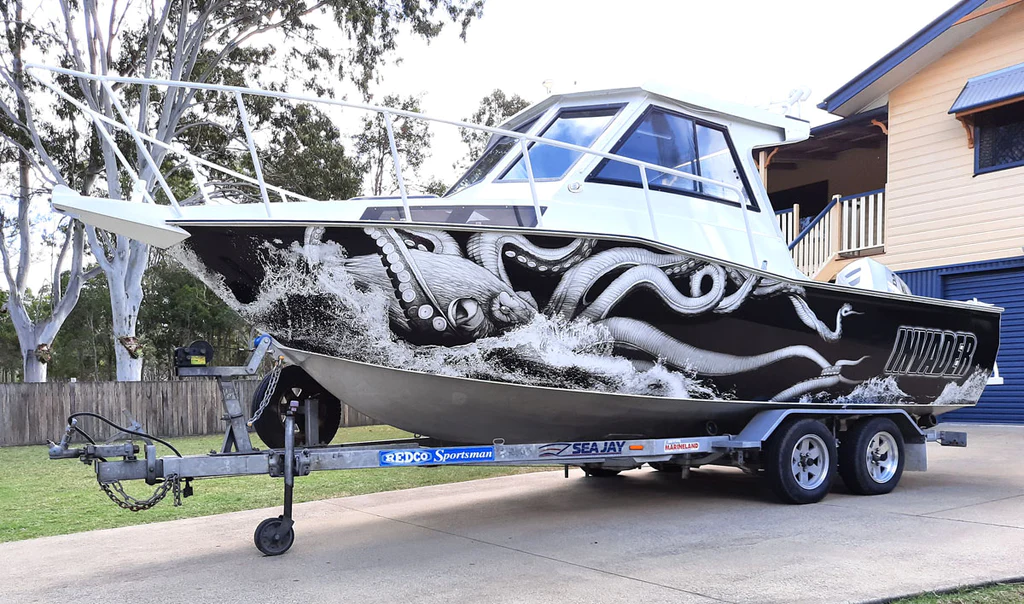
Factors Influencing Cost
Boat size: The size of the boat is one of the main factors influencing the overall cost of a wrap.
The larger the boat, the more materials are needed and the more time-consuming the installation process becomes. For instance, wrapping an 18-foot boat can cost approximately $2,500.
Design complexity: Another factor affecting boat wrap cost is the complexity of the design.
Simple, single-color wraps can be cheaper than those with intricate graphics or custom designs.
The cost of designing and printing custom boat wraps can increase the overall expense.
Wrap quality: The quality of the vinyl used for wrapping also influences the cost.
Higher-quality wraps offer enhanced durability and better adhesion to the boat's surface, but they come at a higher price than lower-quality materials.
In 2024, boat wrap costs typically range between $1,500 and $3,500, depending on boat size, design complexity, and wrap quality.
By carefully considering these factors, boat owners can make an informed decision when choosing a wrap that suits their needs and budget.
Technological Advancements
Boat Wraps and New Technologies
In recent years, the boating industry has witnessed a surge in innovation and technological advancements.
One notable trend is the rising popularity of boat wraps. Not only do they provide a cost-effective and customizable alternative to traditional paint jobs, but they also take advantage of cutting-edge materials and printing technologies.
For instance, the wraps are made from high-quality vinyl and can feature intricate designs that are resistant to UV damage, water, and other environmental impacts.
Alongside the growth of boat wraps, new developments have been shaping the future of boating.
Innovative designs and features are leading to more efficient, eco-friendly, and user-friendly experiences.
Some of the most significant technologies include the Seakeeper Ride, hybrid boats, Starlink satellite internet, advanced GPS, improved boat handling, autonomous features, assisted docking systems, self-driving boat software, and electric motors.
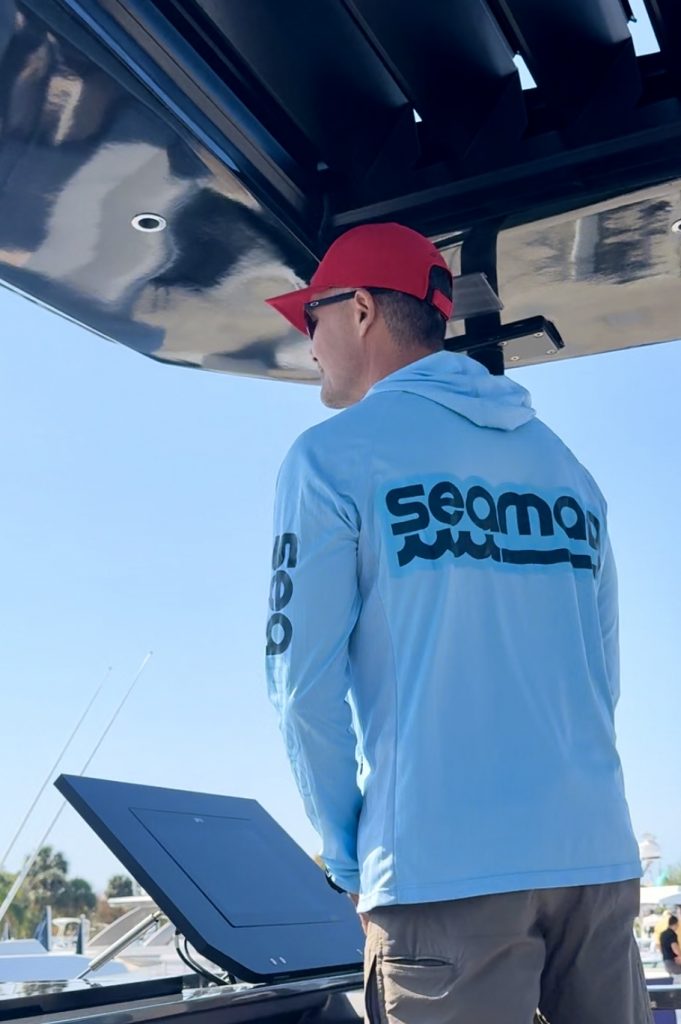
The Future of Boating
As boating embraces the benefits of technology, the Seakeeper Ride system is a prime example of how these advancements improve comfort and safety on the water.
This ingenious innovation uses a gyroscope to counteract wave-induced motion, providing a smoother sailing experience and minimizing motion sickness for passengers.
By incorporating this system into their boats, manufacturers are enhancing the overall boating experience.
Hybrid boats, like their automotive counterparts, are gaining traction as an environmentally friendly option.
They operate on both traditional fuel and electric motors reducing emissions and providing a more sustainable boating experience.
Electric propulsion also offers increased fuel efficiency and can contribute to significant cost savings over time.
Global satellite internet systems, such as Starlink, are making waves in the boating industry.
Boaters can now benefit from high-speed internet connectivity even in remote areas, allowing for real-time communication, streaming, and smart home technology integration on the water.
Additionally, the integration of advanced GPS technology enables faster and more accurate navigation, while improvements in handling make for better control and maneuverability.
These innovations, along with autonomous features and assisted docking systems, are making sailing more accessible to novice and experienced boaters alike.
Self-driving boat software, like Volvo Penta's Assisted Docking system, utilizes sensors and sophisticated algorithms to facilitate docking procedures, minimizing the risk of human error and damage to the vessel.
Market Analysis and Predictions
Consumer Demand
In recent years, the boating industry has seen a surge in the popularity of boat wraps. As we venture into 2024, this trend is expected to continue.
With more and more anglers and hunters turning to boat wraps as a convenient, easy to maintain, and cost-effective solution for personalizing their boats, consumer demand is predicted to see a steady increase.
One of the contributing factors for the growth of boat wraps is the rise in popularity of electric boats, such as the Nautique Super Air GS22E.
As electric boat sales grow, so does the demand for personalized, high-quality boat wraps.
Boat Wrap Popularity in Regions
North America is leading the way in boat wrap popularity, with a particularly strong demand in Canada.
According to a SportFishHub report, new boat prices have increased significantly in recent years, with an average of 10% higher prices in 2022.
This sustained growth in the boat industry is directly affecting the demand for boat wraps.
| Region | 2022 | 2023 | 2024 |
|---|---|---|---|
| North America | 5% | 7% | 9% |
| Canada | 6% | 8% | 10% |
| Europe | 3% | 5% | 7% |
| Asia-Pacific | 1% | 2% | 4% |
Three factors driving regional demandfor boat wraps include:
- Economic growth in these regions, which results in higher disposable income.
- Expanding boating culture that leads to more boat owners and enthusiasts seeking unique wraps.
- Technological advancements making boat wraps more accessible and affordable.
- Reduced environmental impact: The application process for vinyl boat wraps doesn't involve harmful chemicals or fumes typically associated with paint jobs. This significantly lessens the negative impact on the environment.
- Reusable and recyclable: Vinyl wraps can be removed when needed, and the material is recyclable. This further contributes to its eco-friendly nature.
- Long-lasting: In comparison to traditional boat paints, well-maintained vinyl wraps can last up to seven years, reducing the need for frequent reapplications.
- Adhesion: Optimized bonding techniques for secure attachment.
- Techniques: Options for partial or full boat wraps.
- Technological advancements: Cameras and lidar for accurate measurements.
- Vessel Inspections: Boaters should ensure their vessels meet safety regulations and undergo necessary inspections, including the examination of emergency systems, life jackets, and fire extinguishers.
- Life Jackets & Engine Cut-Off Switch (ECOS): Boaters should ensure they are using proper personal flotation devices (PFDs) and ECOS systems to avoid accidents.
- Communication devices: Marine radio and other communication devices should be fully functional and used according to established guidelines.
- Boating Courses: Taking a boating course is essential for understanding and complying with boating regulations and safety practices. Many countries require passing a boating course before obtaining a boating license.
- Environmentally Conscious Boating: The conservation of marine resources and habitats should be prioritized by recreational boaters to protect the environment.
Charlie is Editor-in-Chief of Sea Magazine

